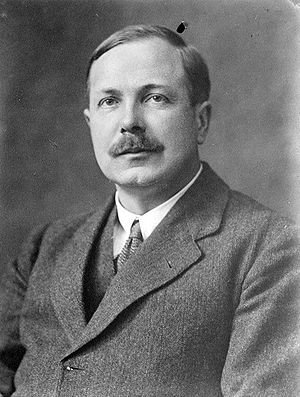-
(b.) -1887 December 18(d.)1962 December 31
Bio/Description
An English physicist; the grandson of Charles Darwin, he served as Director of the National Physical Laboratory (NPL) during the Second World War. He was born in Cambridge, England into a scientific dynasty, the son of the mathematician George Howard Darwin and the grandson of Charles Darwin. His mother was Maud du Puy of Philadelphia, Pennsylvania. His elder sister was the artist Gwen Raverat, and his younger sister Margaret married Geoffrey Keynes, the brother of the economist John Maynard Keynes. His younger brother William Robert Darwin was a London stockbroker. He was educated at Marlborough College and, in 1910; he graduated from Trinity College, Cambridge in mathematics. He secured a post-graduate position at the Victoria University of Manchester, working under Ernest Rutherford and Niels Bohr on Rutherford's atomic theory. In 1912, his interests developed into using his mathematical skills assisting Henry Moseley on X-ray diffraction. His two 1914 papers on diffraction of X-rays from perfect crystals became often cited classics. On the outbreak of World War I, he joined the Royal Engineers, where he worked on problems in ballistics. From 1919 to 1922 he was a lecturer and fellow of Christ's College, Cambridge where he worked with R.H. Fowler on statistical mechanics, and what came to be known as the Darwin?Fowler method. He then worked for a year at the California Institute of Technology before becoming Tait Professor of Natural Philosophy at the University of Edinburgh in 1924, working on quantum optics and magneto-optic effects. He was the first in 1928, to calculate the fine structure of the hydrogen atom under P.A.M. Dirac's relativistic theory of the electron. In 1925 he married Katharine Pember, and had four sons and a daughter. In 1936 he became master of Christ's College, beginning his career as an active and able administrator, becoming Director of the National Physical Laboratory on the approach of war in 1938. He served in the role into the post-war period, unafraid to seek improved laboratory performance through reorganization, but spending much of the war years working on the Manhattan Project coordinating the American, British, and Canadian efforts. He was appointed KBE in 1942. In his spare time, he also served as a wartime Vice President of the Simplified Spelling Society. In later years he travelled widely, an enthusiastic collaborator across national borders and an able communicator of scientific ideas. In Turing?s Cathedral by George Dyson it is noted that he wrote to his superiors in July 1947, ?Our big computing engine . . . has now got to the stage of ironmongery?, explaining that Womersley and Turing ?are both agreed that it would be best that Turing should go off it for a spell.?
-
Date of Birth:
1887 December 18 -
Date of Death:
1962 December 31 -
Gender:
Male -
Noted For:
Assisted Henry Moseley on X-ray diffraction which occurs with all waves, including sound waves, water waves, and electromagnetic waves such as visible light, x-rays and radio waves -
Category of Achievement:
-
More Info:


